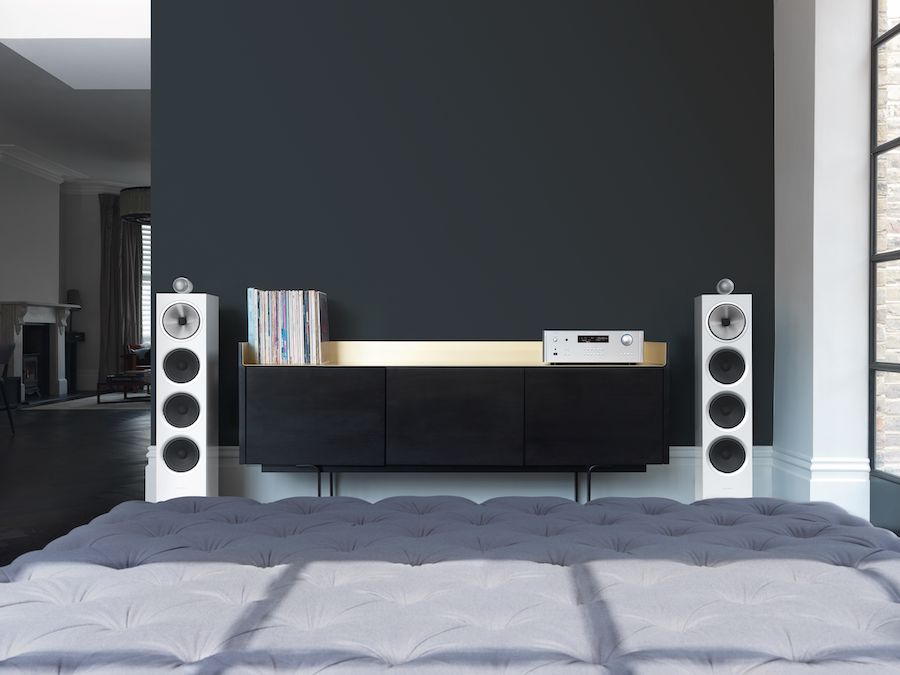Why Serious Music Lovers Choose 2-Channel Audio Systems
Rediscovering How Music Was Meant to Be Heard

You might think a surround sound system or modern soundbar handles everything you need for music. They're convenient, they fill the room with sound, and they work great for movies. But sit down for your first real 2-channel audio system demo and something clicks—you've been missing half the music. That carefully recorded soundstage, the precise placement of instruments, the sense of space between the guitar and vocalist—it's all there in the original recording, waiting for the right setup to reveal it.
Let's explore why serious Boston music lovers choose stereo over surround, and a couple of examples of what those systems might look like in your Massachusetts home.
SEE ALSO: Building a Hi-Fi System from Scratch: Where to Start
Most Music is Recorded for Stereo Playback
Most music is still mostly recorded and mixed for stereo—two channels, left and right. The recording engineer carefully positions each instrument and voice across that stereo field, creating a soundstage that mimics a live performance. When you listen through a proper 2-channel setup with speakers positioned correctly, you hear exactly what the artist and engineer intended. The saxophone sits slightly left of center, the piano occupies the right side, and the vocalist anchors the middle. Close your eyes, and you can point to where each instrument lives in space.
Surround sound systems spread music across five or more speakers, which sounds impressive at first, but actually works against how the music was mixed. You're hearing an artificial expansion of a stereo recording. Soundbars face a different problem—they're trying to create stereo separation from a single cabinet, and physics limits what's possible. The imaging never quite materializes.
A dedicated stereo system with properly spaced speakers creates a sense of dimensional depth and width that draws you into the performance. When set up right, the speakers themselves seem to disappear, leaving just the music floating between and behind them.
From Entry-Level Excellence to Reference Quality
Building a 2-channel system doesn't require mortgaging your house, though you can certainly go that route if the bug bites hard enough. Let's look at two genuine approaches.
An accessible starting point might pair DALI speakers with a NAD C 399 integrated amplifier. The NAD includes built-in BluOS streaming with high-resolution capability, so you have your source handled without the need for additional boxes. This combination delivers proper stereo imaging with enough power to drive the DALI speakers cleanly. You'll hear that three-dimensional soundstage and instrument separation that makes 2-channel special.
Step up to reference-level territory, and you're looking at something like Focal Sopra or B&W 800 Series speakers paired with McIntosh amplification—perhaps the MA352 integrated amplifier or separates like the C2800 and MC312. At this level, the refinement becomes almost eerie. Subtle room ambience in recordings, the texture of a brushed snare drum, the decay of a piano note—details you didn't know existed are now revealed.
Both systems deliver genuine stereo imaging. The difference comes down to resolution, scale, and how deeply the music pulls you in. But make no mistake—even the more accessible system will transform how you experience your favorite albums.
What You’ll Hear
Jazz recordings reveal themselves completely—you hear the air around the drum kit, each horn player's exact position. Acoustic guitars gain texture and presence that make you check if someone's in the room. Vocals take on a three-dimensional quality that soundbars can't touch.
Surround sound excels for movies. But music lives in stereo.
Ready to hear the difference? Visit our showroom with your favorite albums. We've been helping music lovers throughout Boston and the surrounding areas build systems that honor their collections since 1975. Contact us to schedule your listening session.

